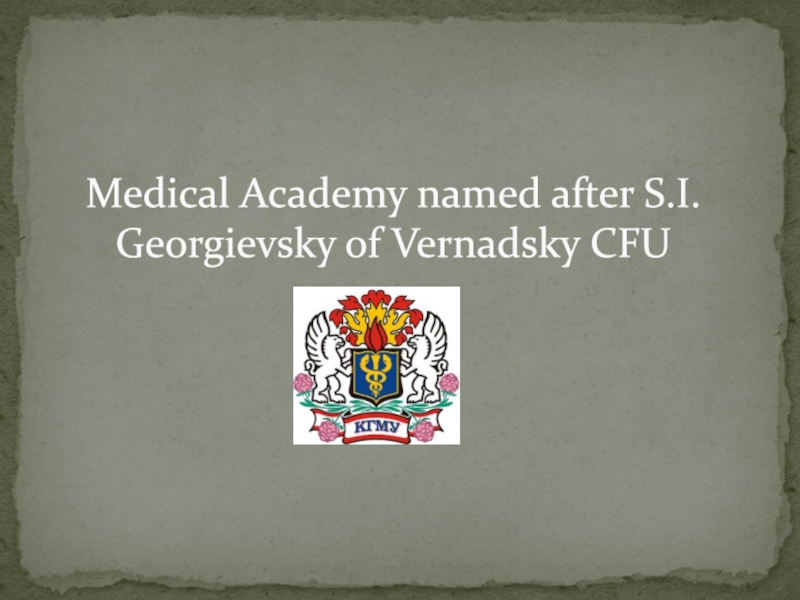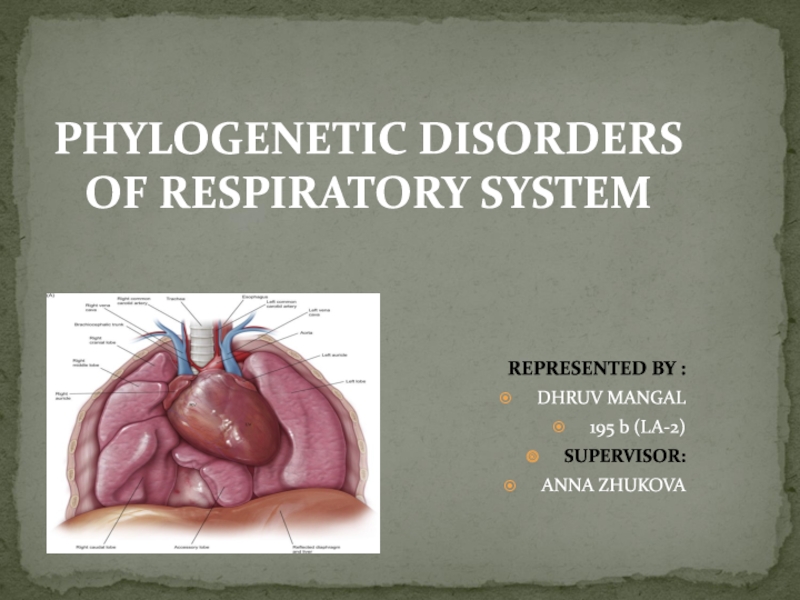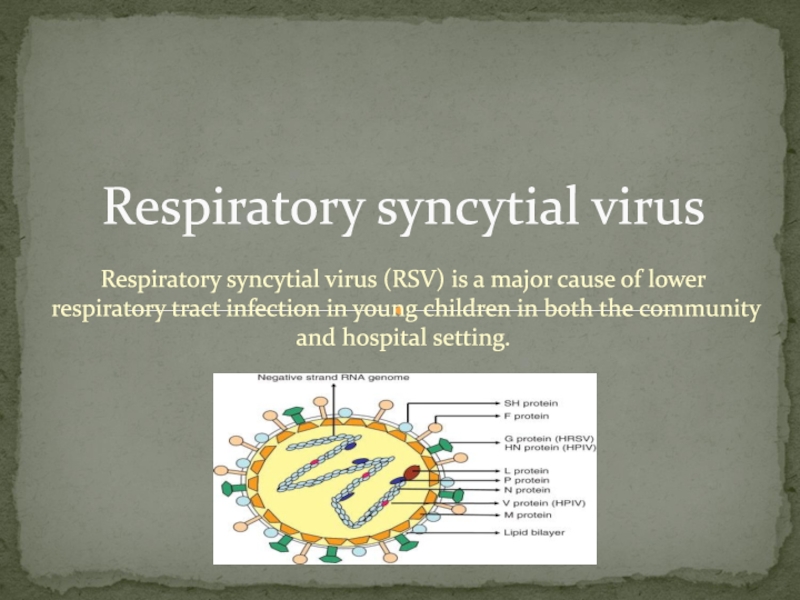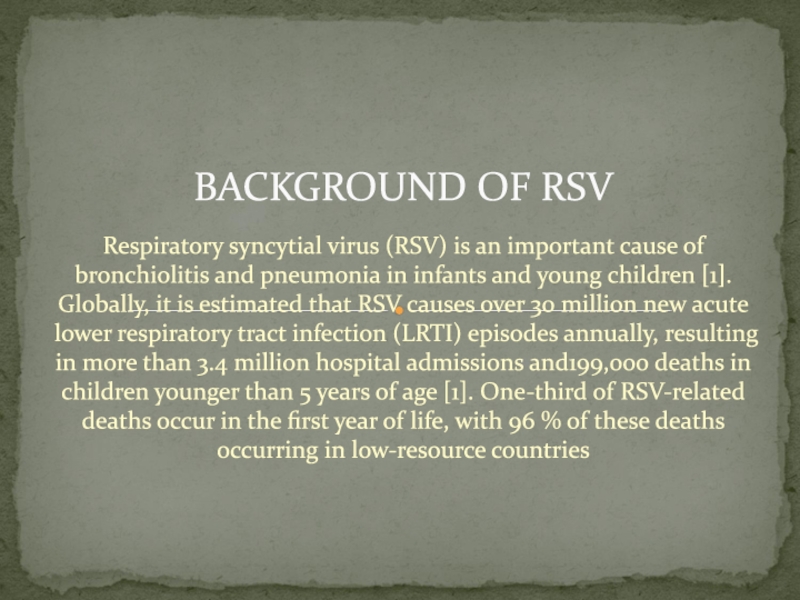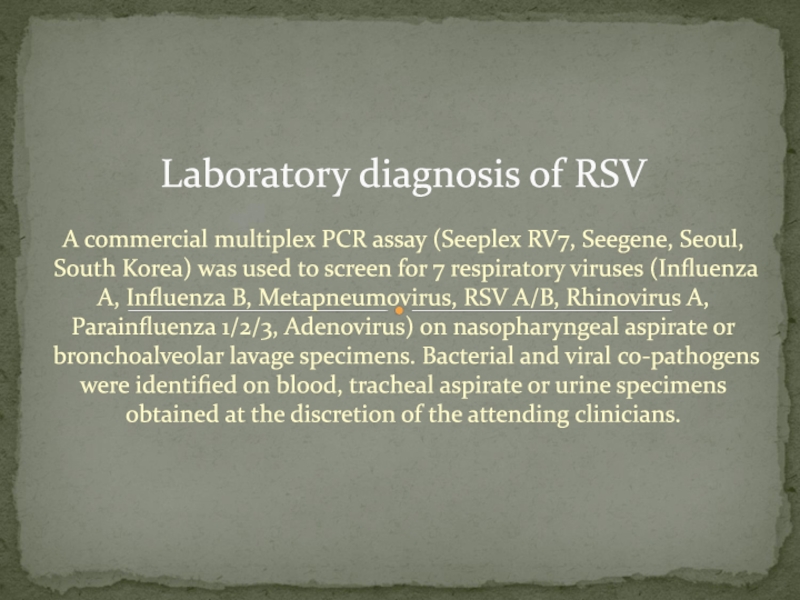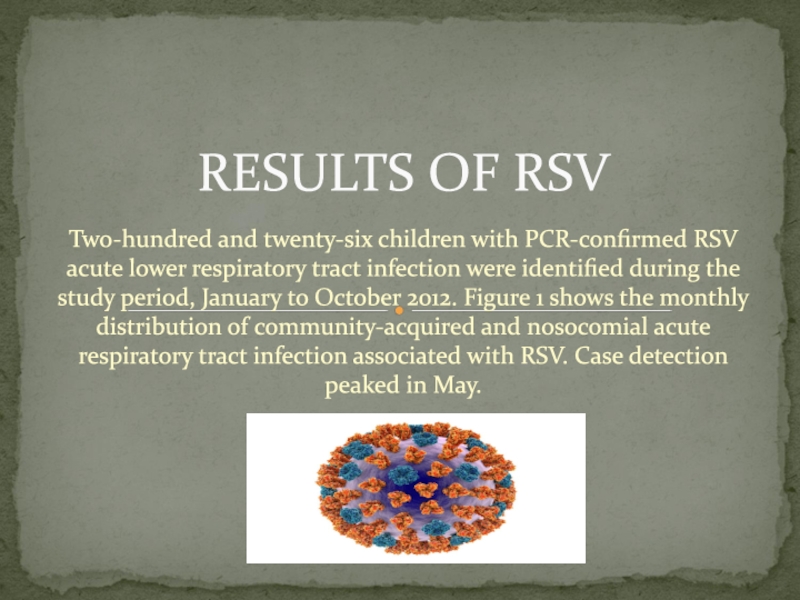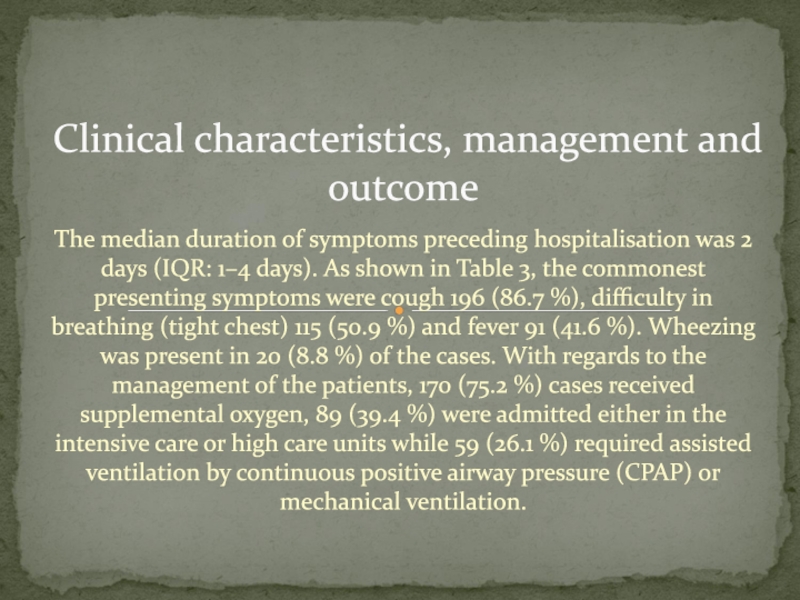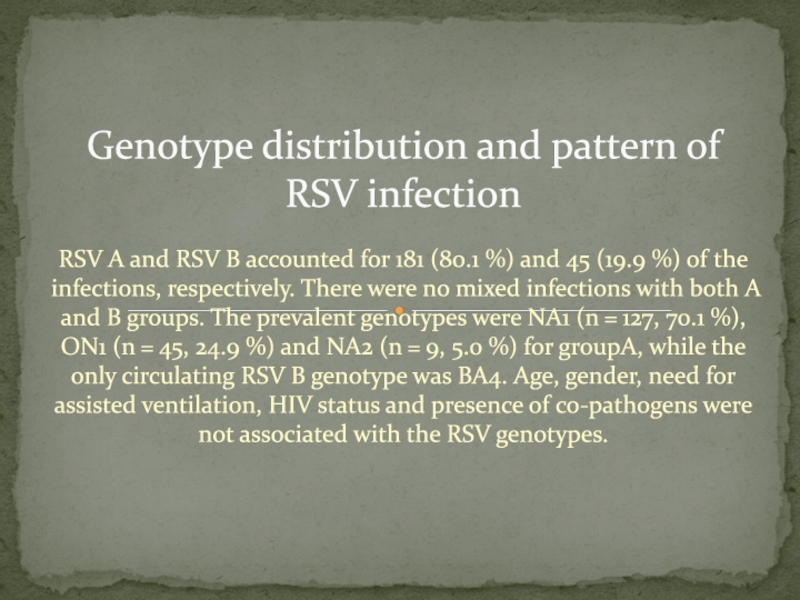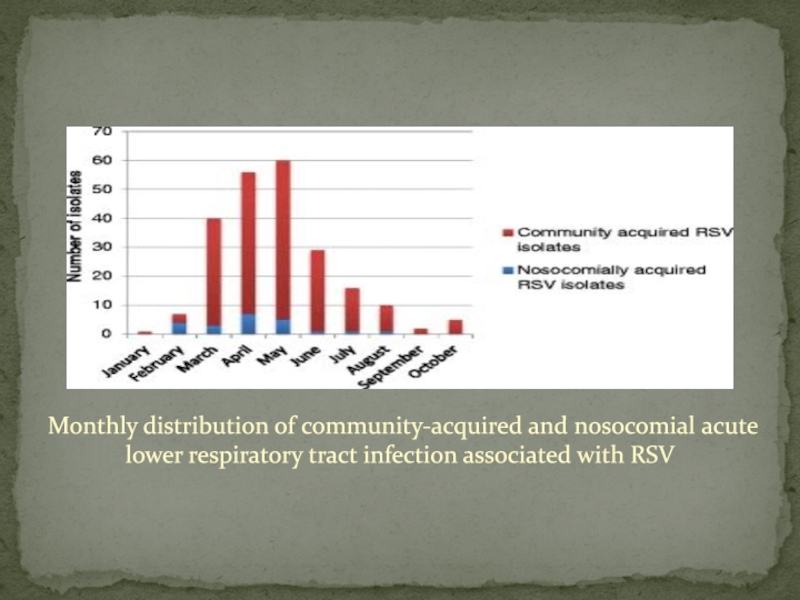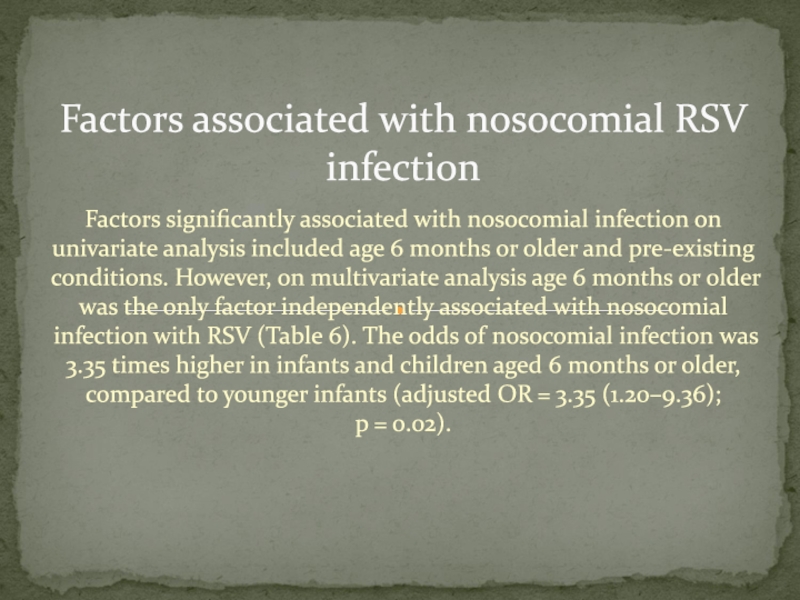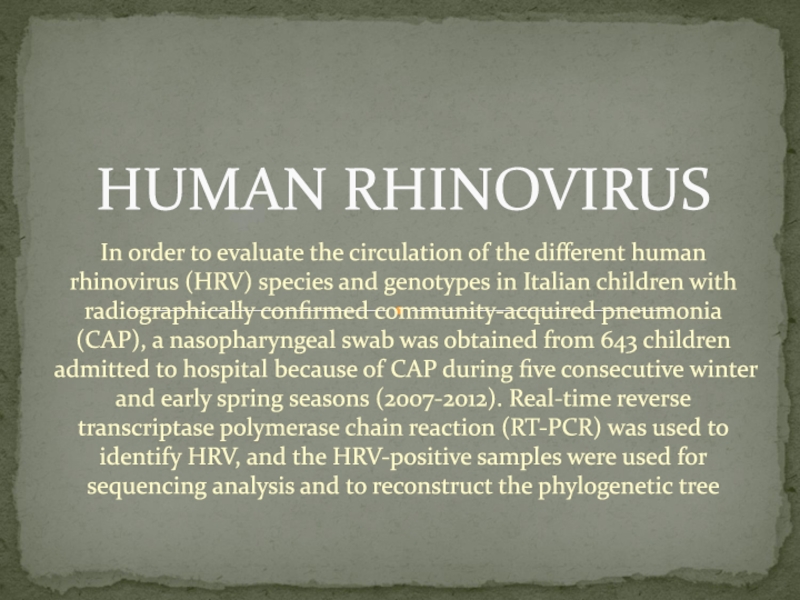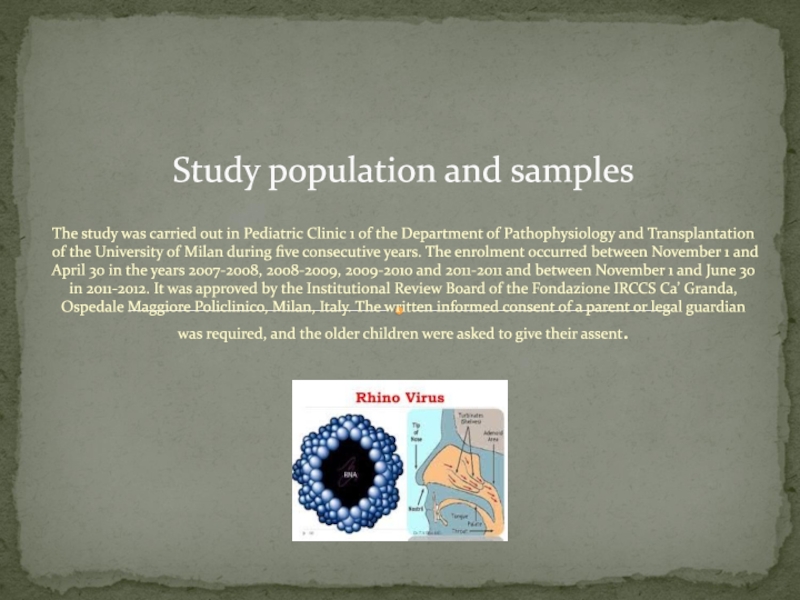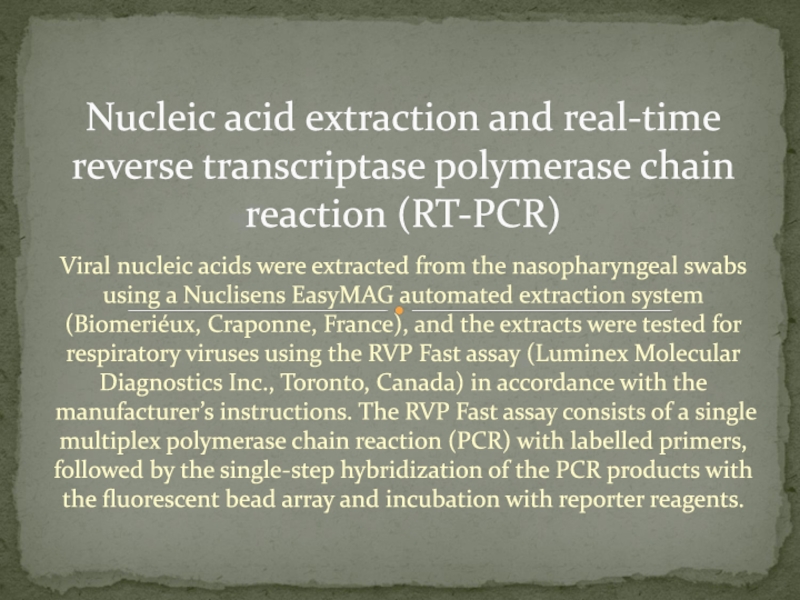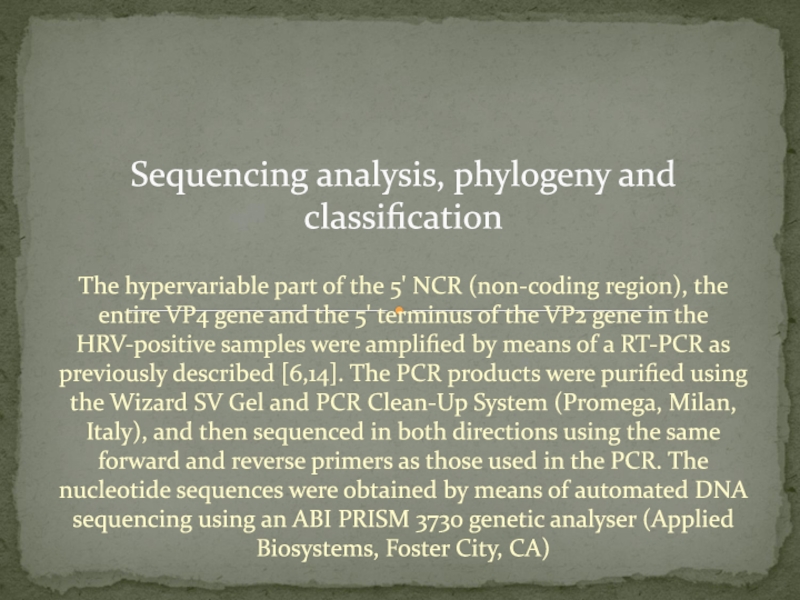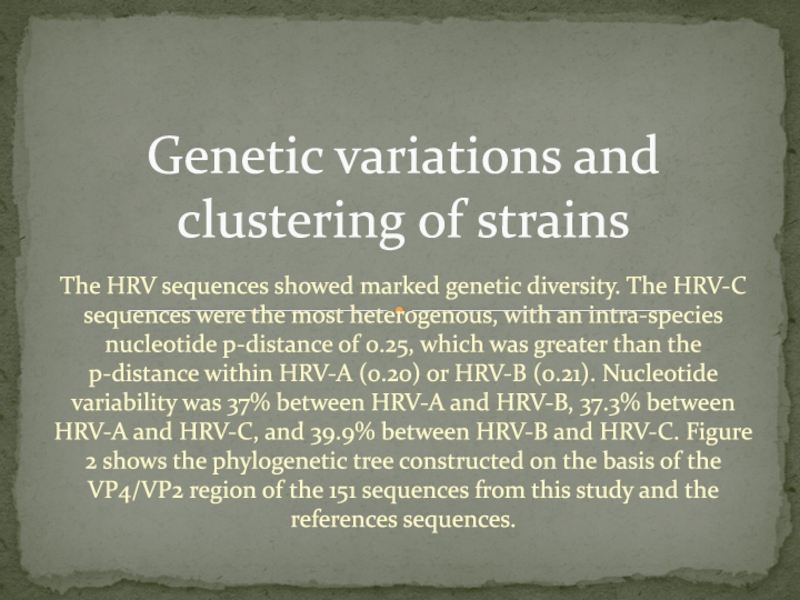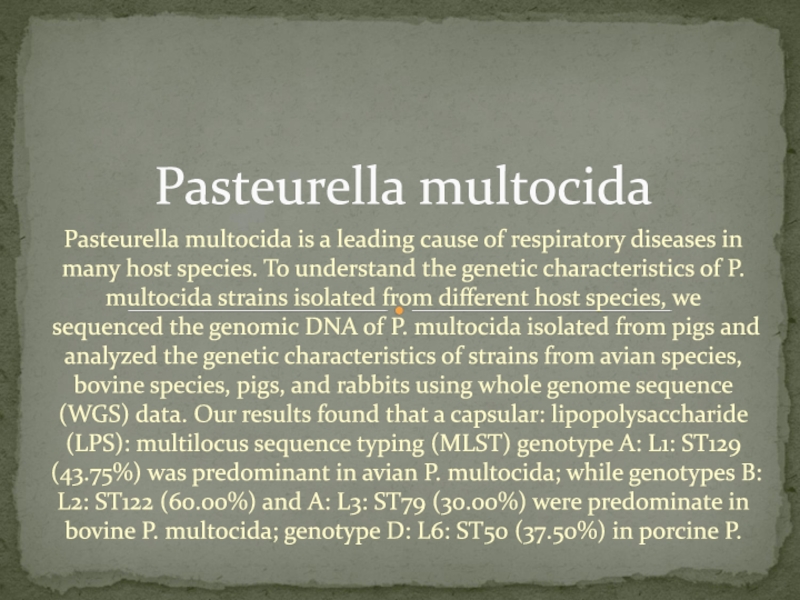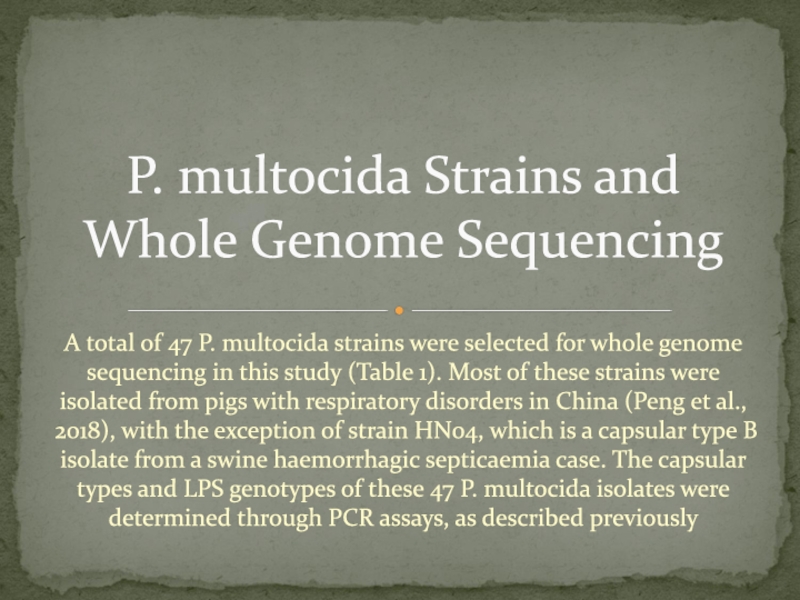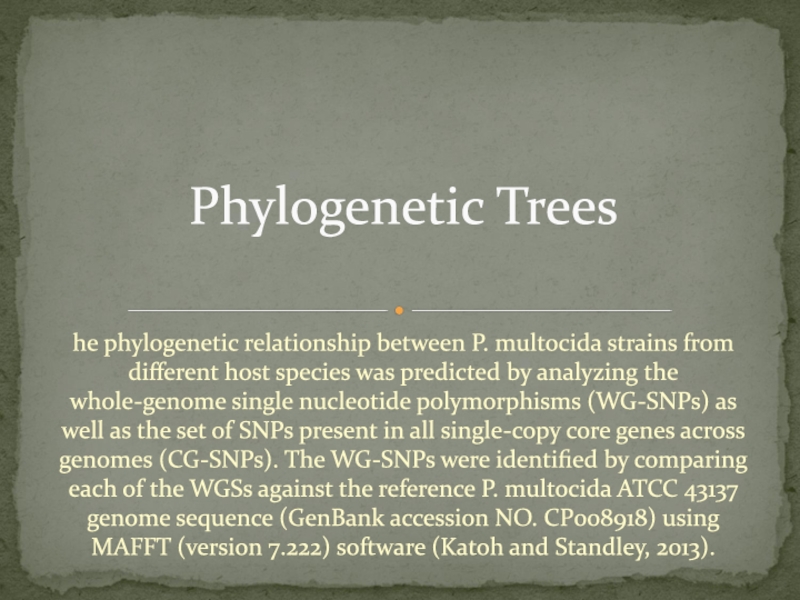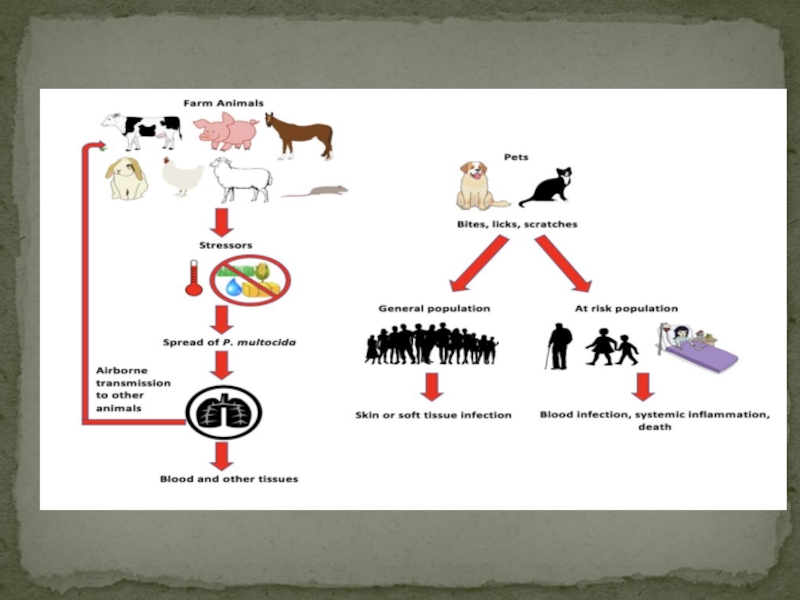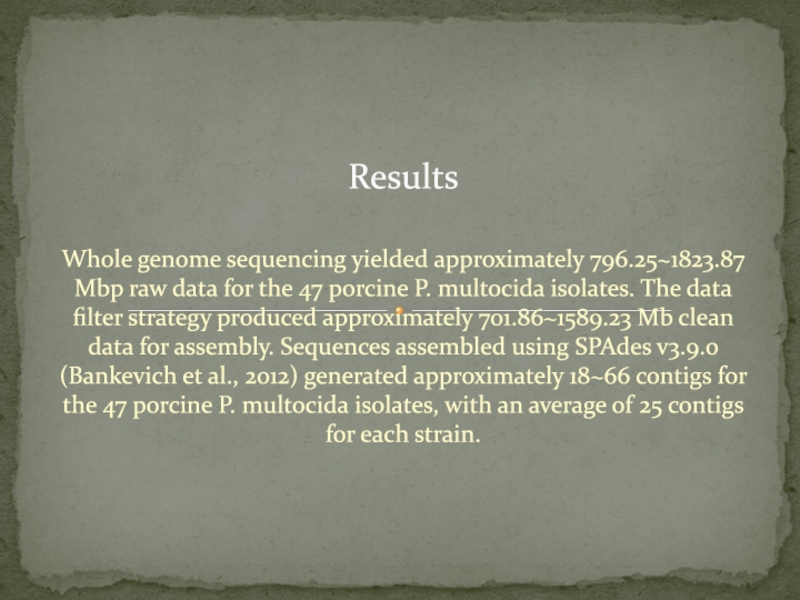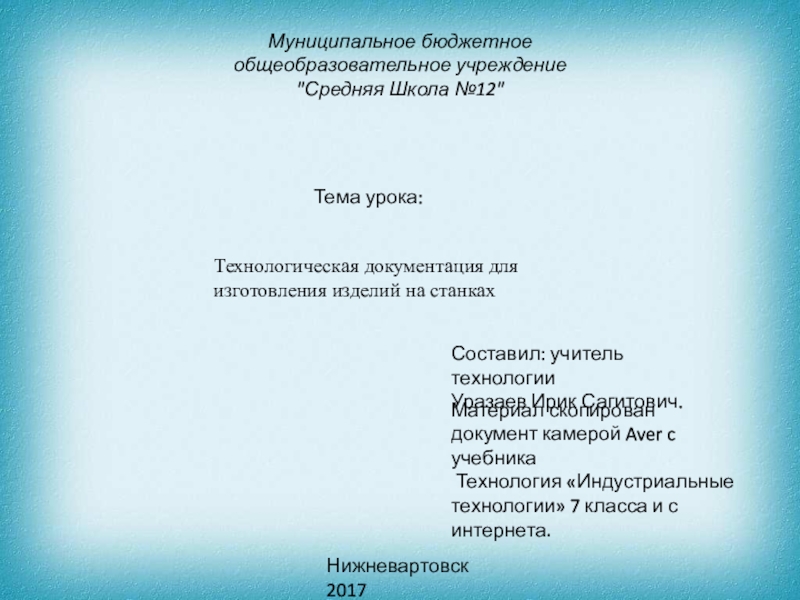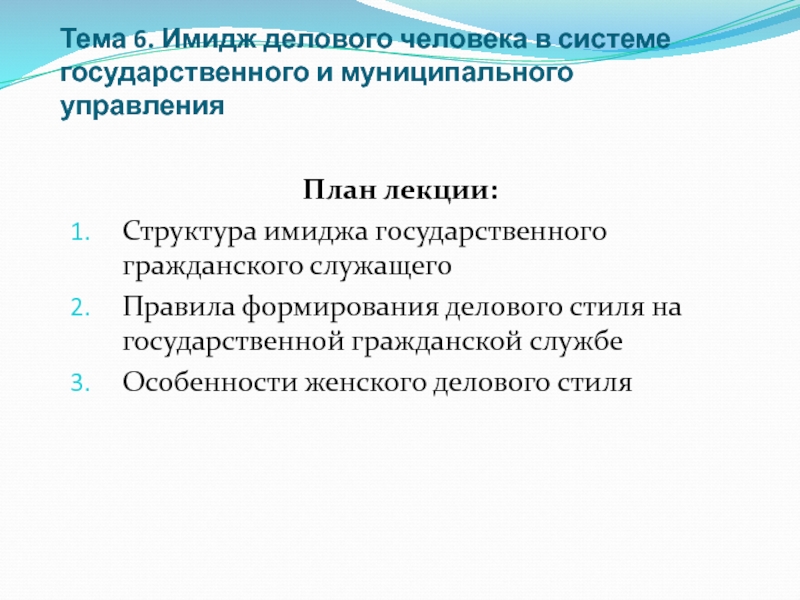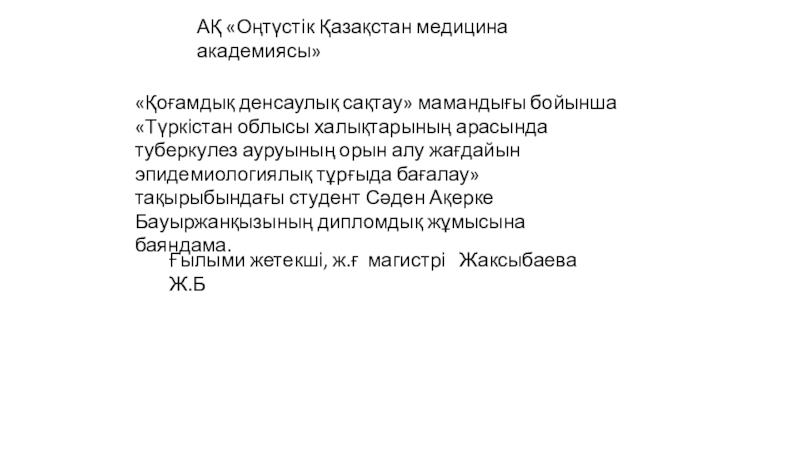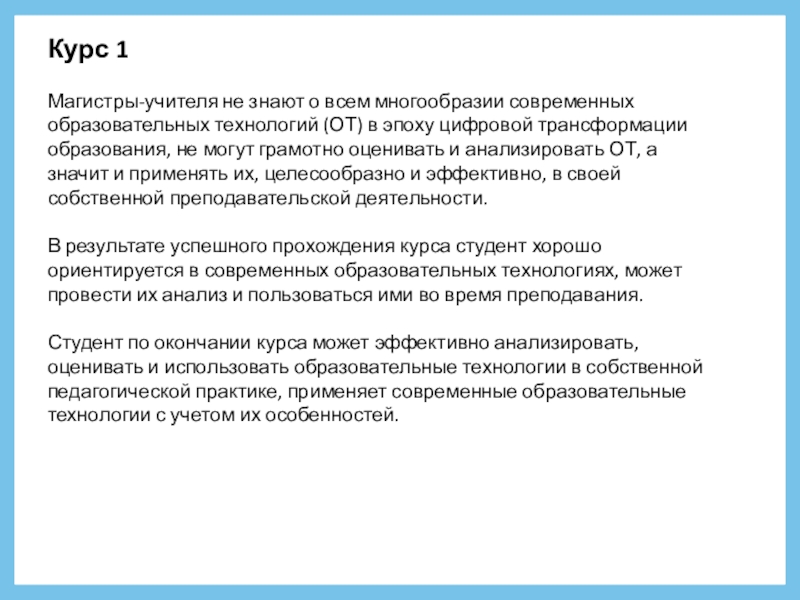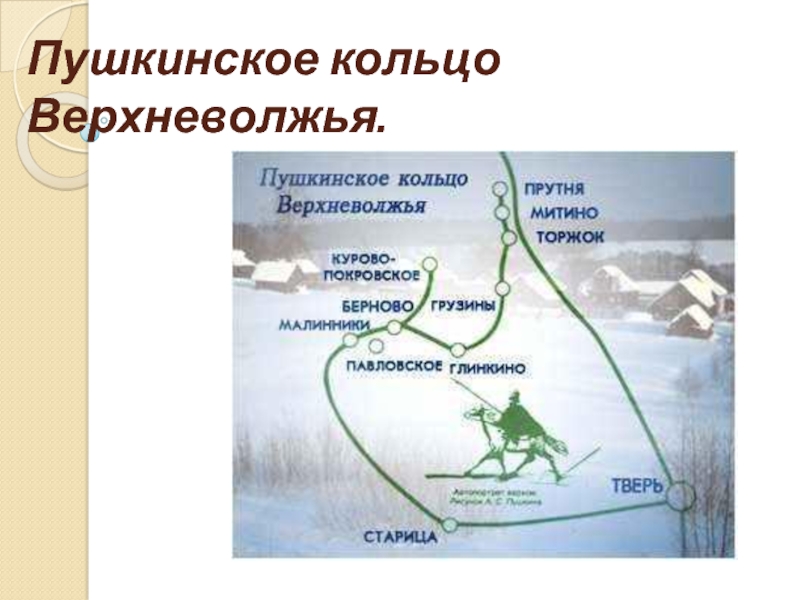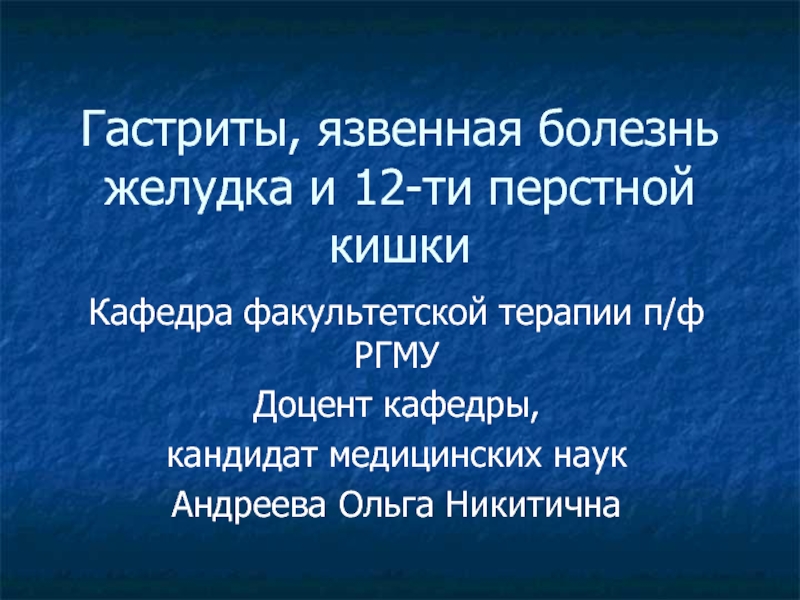Разделы презентаций
- Разное
- Английский язык
- Астрономия
- Алгебра
- Биология
- География
- Геометрия
- Детские презентации
- Информатика
- История
- Литература
- Математика
- Медицина
- Менеджмент
- Музыка
- МХК
- Немецкий язык
- ОБЖ
- Обществознание
- Окружающий мир
- Педагогика
- Русский язык
- Технология
- Физика
- Философия
- Химия
- Шаблоны, картинки для презентаций
- Экология
- Экономика
- Юриспруденция
Medical Academy named after S.I. Georgievsky of Vernadsky CFU
Содержание
- 1. Medical Academy named after S.I. Georgievsky of Vernadsky CFU
- 2. PHYLOGENETIC DISORDERS OF RESPIRATORY SYSTEM REPRESENTED BY :DHRUV MANGAL195 b (LA-2)SUPERVISOR: ANNA ZHUKOVA
- 3. Respiratory syncytial virus (RSV) is a major
- 4. Respiratory syncytial virus (RSV) is an important
- 5. A commercial multiplex PCR assay (Seeplex RV7,
- 6. Two-hundred and twenty-six children with PCR-confirmed RSV
- 7. The median duration of symptoms preceding hospitalisation
- 8. RSV A and RSV B accounted for
- 9. Monthly distribution of community-acquired and nosocomial acute lower respiratory tract infection associated with RSV
- 10. Factors significantly associated with nosocomial infection on
- 11. In order to evaluate the circulation of
- 12. The study was carried out in Pediatric
- 13. Viral nucleic acids were extracted from the
- 14. The hypervariable part of the 5' NCR
- 15. The HRV sequences showed marked genetic diversity.
- 16. Pasteurella multocida is a leading cause of
- 17. A total of 47 P. multocida strains
- 18. he phylogenetic relationship between P. multocida strains
- 19. Слайд 19
- 20. Whole genome sequencing yielded approximately 796.25~1823.87 Mbp
- 21. Слайд 21
- 22. Скачать презентанцию
Слайды и текст этой презентации
Слайд 2PHYLOGENETIC DISORDERS OF RESPIRATORY SYSTEM
REPRESENTED BY :
DHRUV MANGAL
195 b (LA-2)
SUPERVISOR:
Слайд 3Respiratory syncytial virus (RSV) is a major cause of lower
respiratory tract infection in young children in both the community
and hospital setting.
Слайд 4Respiratory syncytial virus (RSV) is an important cause of bronchiolitis
and pneumonia in infants and young children [1]. Globally, it
is estimated that RSV causes over 30 million new acute lower respiratory tract infection (LRTI) episodes annually, resulting in more than 3.4 million hospital admissions and199,000 deaths in children younger than 5 years of age [1]. One-third of RSV-related deaths occur in the first year of life, with 96 % of these deaths occurring in low-resource countriesBACKGROUND OF RSV
Слайд 5A commercial multiplex PCR assay (Seeplex RV7, Seegene, Seoul, South
Korea) was used to screen for 7 respiratory viruses (Influenza
A, Influenza B, Metapneumovirus, RSV A/B, Rhinovirus A, Parainfluenza 1/2/3, Adenovirus) on nasopharyngeal aspirate or bronchoalveolar lavage specimens. Bacterial and viral co-pathogens were identified on blood, tracheal aspirate or urine specimens obtained at the discretion of the attending clinicians.Laboratory diagnosis of RSV
Слайд 6Two-hundred and twenty-six children with PCR-confirmed RSV acute lower respiratory
tract infection were identified during the study period, January to
October 2012. Figure 1 shows the monthly distribution of community-acquired and nosocomial acute respiratory tract infection associated with RSV. Case detection peaked in May.RESULTS OF RSV
Слайд 7The median duration of symptoms preceding hospitalisation was 2 days
(IQR: 1–4 days). As shown in Table 3, the commonest
presenting symptoms were cough 196 (86.7 %), difficulty in breathing (tight chest) 115 (50.9 %) and fever 91 (41.6 %). Wheezing was present in 20 (8.8 %) of the cases. With regards to the management of the patients, 170 (75.2 %) cases received supplemental oxygen, 89 (39.4 %) were admitted either in the intensive care or high care units while 59 (26.1 %) required assisted ventilation by continuous positive airway pressure (CPAP) or mechanical ventilation.Clinical characteristics, management and outcome
Слайд 8RSV A and RSV B accounted for 181 (80.1 %)
and 45 (19.9 %) of the infections, respectively. There were
no mixed infections with both A and B groups. The prevalent genotypes were NA1 (n = 127, 70.1 %), ON1 (n = 45, 24.9 %) and NA2 (n = 9, 5.0 %) for groupA, while the only circulating RSV B genotype was BA4. Age, gender, need for assisted ventilation, HIV status and presence of co-pathogens were not associated with the RSV genotypes.Genotype distribution and pattern of RSV infection
Слайд 9Monthly distribution of community-acquired and nosocomial acute lower respiratory tract
infection associated with RSV
Слайд 10Factors significantly associated with nosocomial infection on univariate analysis included
age 6 months or older and pre-existing conditions. However, on
multivariate analysis age 6 months or older was the only factor independently associated with nosocomial infection with RSV (Table 6). The odds of nosocomial infection was 3.35 times higher in infants and children aged 6 months or older, compared to younger infants (adjusted OR = 3.35 (1.20–9.36); p = 0.02).Factors associated with nosocomial RSV infection
Слайд 11In order to evaluate the circulation of the different human
rhinovirus (HRV) species and genotypes in Italian children with radiographically
confirmed community-acquired pneumonia (CAP), a nasopharyngeal swab was obtained from 643 children admitted to hospital because of CAP during five consecutive winter and early spring seasons (2007-2012). Real-time reverse transcriptase polymerase chain reaction (RT-PCR) was used to identify HRV, and the HRV-positive samples were used for sequencing analysis and to reconstruct the phylogenetic treeHUMAN RHINOVIRUS
Слайд 12The study was carried out in Pediatric Clinic 1 of
the Department of Pathophysiology and Transplantation of the University of
Milan during five consecutive years. The enrolment occurred between November 1 and April 30 in the years 2007-2008, 2008-2009, 2009-2010 and 2011-2011 and between November 1 and June 30 in 2011-2012. It was approved by the Institutional Review Board of the Fondazione IRCCS Ca’ Granda, Ospedale Maggiore Policlinico, Milan, Italy. The written informed consent of a parent or legal guardian was required, and the older children were asked to give their assent.Study population and samples
Слайд 13Viral nucleic acids were extracted from the nasopharyngeal swabs using
a Nuclisens EasyMAG automated extraction system (Biomeriéux, Craponne, France), and
the extracts were tested for respiratory viruses using the RVP Fast assay (Luminex Molecular Diagnostics Inc., Toronto, Canada) in accordance with the manufacturer’s instructions. The RVP Fast assay consists of a single multiplex polymerase chain reaction (PCR) with labelled primers, followed by the single-step hybridization of the PCR products with the fluorescent bead array and incubation with reporter reagents.Nucleic acid extraction and real-time reverse transcriptase polymerase chain reaction (RT-PCR)
Слайд 14The hypervariable part of the 5' NCR (non-coding region), the
entire VP4 gene and the 5' terminus of the VP2
gene in the HRV-positive samples were amplified by means of a RT-PCR as previously described [6,14]. The PCR products were purified using the Wizard SV Gel and PCR Clean-Up System (Promega, Milan, Italy), and then sequenced in both directions using the same forward and reverse primers as those used in the PCR. The nucleotide sequences were obtained by means of automated DNA sequencing using an ABI PRISM 3730 genetic analyser (Applied Biosystems, Foster City, CA)Sequencing analysis, phylogeny and classification
Слайд 15The HRV sequences showed marked genetic diversity. The HRV-C sequences
were the most heterogenous, with an intra-species nucleotide p-distance of
0.25, which was greater than the p-distance within HRV-A (0.20) or HRV-B (0.21). Nucleotide variability was 37% between HRV-A and HRV-B, 37.3% between HRV-A and HRV-C, and 39.9% between HRV-B and HRV-C. Figure 2 shows the phylogenetic tree constructed on the basis of the VP4/VP2 region of the 151 sequences from this study and the references sequences.
Слайд 16Pasteurella multocida is a leading cause of respiratory diseases in
many host species. To understand the genetic characteristics of P.
multocida strains isolated from different host species, we sequenced the genomic DNA of P. multocida isolated from pigs and analyzed the genetic characteristics of strains from avian species, bovine species, pigs, and rabbits using whole genome sequence (WGS) data. Our results found that a capsular: lipopolysaccharide (LPS): multilocus sequence typing (MLST) genotype A: L1: ST129 (43.75%) was predominant in avian P. multocida; while genotypes B: L2: ST122 (60.00%) and A: L3: ST79 (30.00%) were predominate in bovine P. multocida; genotype D: L6: ST50 (37.50%) in porcine P.Pasteurellamultocida
Слайд 17A total of 47 P. multocida strains were selected for
whole genome sequencing in this study (Table 1). Most of
these strains were isolated from pigs with respiratory disorders in China (Peng et al., 2018), with the exception of strain HN04, which is a capsular type B isolate from a swine haemorrhagic septicaemia case. The capsular types and LPS genotypes of these 47 P. multocida isolates were determined through PCR assays, as described previouslymultocida
Слайд 18he phylogenetic relationship between P. multocida strains from different host
species was predicted by analyzing the whole-genome single nucleotide polymorphisms
(WG-SNPs) as well as the set of SNPs present in all single-copy core genes across genomes (CG-SNPs). The WG-SNPs were identified by comparing each of the WGSs against the reference P. multocida ATCC 43137 genome sequence (GenBank accession NO. CP008918) using MAFFT (version 7.222) software (Katoh and Standley, 2013).
Слайд 20Whole genome sequencing yielded approximately 796.25~1823.87 Mbp raw data for
the 47 porcine P. multocida isolates. The data filter strategy
produced approximately 701.86~1589.23 Mb clean data for assembly. Sequences assembled using SPAdes v3.9.0 (Bankevich et al., 2012) generated approximately 18~66 contigs for the 47 porcine P. multocida isolates, with an average of 25 contigs for each strain.Results
